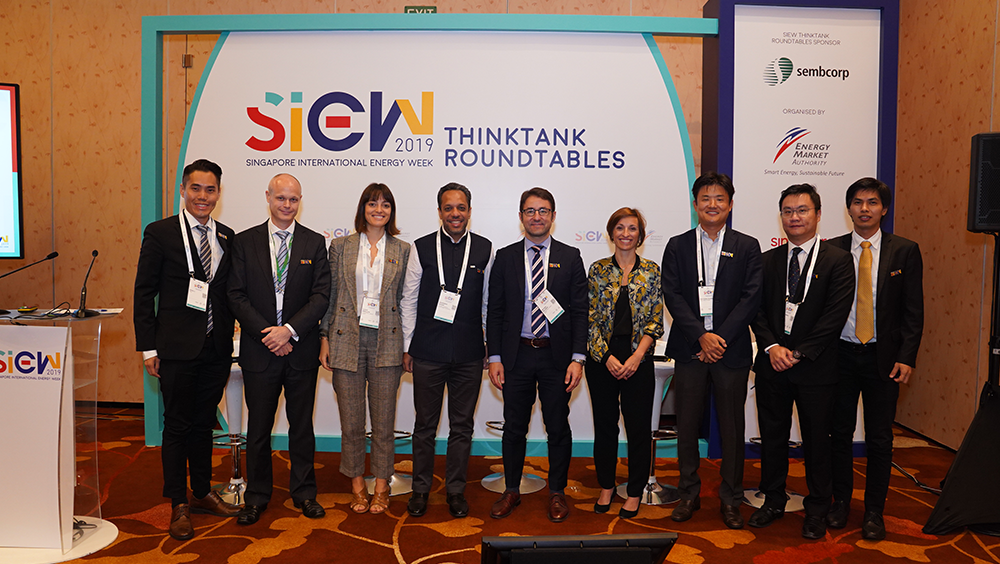
By Wong Chee
CO-OPERATION BETWEEN GOVERNMENT AND PRIVATE SECTOR ENHANCES ASEAN SUSTAINABLE ENERGY DEVELOPMENT
Southeast Asia is set to become a key driver of world energy trends over the next 20 years as its energy demand grows at twice the global average, reflecting the region’s economic rise but also increasing the challenges for its policy makers.
This was highlighted in the International Energy Agency’s (IEA) 4th Southeast Asia Energy Outlook Report during SIEW Thinktank Roundtable session “Investment in Reliable, Sustainable and Affordable Power in Southeast Asia” by Michael Waldron, Head of Investment Team, Energy Supply and Investment Outlooks Division, IEA.
Global energy investment stabilised in 2018 at USD$1.8 trillion, ending three consecutive years of decline. Capital spending on fossil fuel supply rose but more investment in energy efficiency and renewable power is needed.
However, in Southeast Asia, the rapid increase in overall energy demand has been met by doubling its fossil fuel use. Southeast Asia’s energy investment is low on a GDP basis, which suggests the region may not be investing enough to support fast-growing energy demand in the region and to meet sustainability goals.
Policy support and investor appetite for renewable electricity projects are picking up, but the growth in renewables would cover only about a third of rapid overall growth in electricity demand. The region needs to step up energy investment in renewables and to steer towards a healthier and more sustainable path.
Today, funds for energy investments come mostly from public and domestic sources. This is not enough to cover the sizable investment needs ahead. There is a need to attract investment from more sources. The IEA highlighted 4 investment priorities:
-
Financial health of system;
-
Project bankability;
-
Financing and cost of capital;
-
Integrated approaches
Reducing risks, improving policy and market approaches are critical to meet future power investment needs. There is no single solution to turn emission trends around.
The first panel discussed risks, policies and investment opportunities for renewables in Southeast Asia. Panellists explored key drivers guiding investment decisions and key near-term actions.
Dr. Arunabha Ghosh, Founder and CEO, The Council on Energy, Environment and Water (CEEW) highlighted that the cost of financing in India is 60 to 70 per cent. Risk perception is high partly fuelled by policy and grid inflation risk. There is a need for government intervention to introduce public policies to reduce risk perception.
Mr. Gu-Yoon Chung, Head of Business Development Asia Pacific, Enel Green Power, highlighted that in many regions where governments set the price of energy, it is hard to determine the true cost of power generation and this may limit investment in renewables. Governments need to evolve their role in the power industry. He cited the early de-regularisation in America and Latin America that helps kickstart sustainable energy investment.
Mr. Kelvin Wong, Executive Director, Project Finance, Institutional Banking Group, DBS Group cited Vietnam’s policy on encouraging rooftop solar panel but lacks coordination within to significantly scale up deployment. He also highlighted that different countries have different priorities.
Ms. Audray Souche, Managing Partner, DFDL highlighted the rise of Asian Champions in the renewables sector.
The panel concluded that there is a need to right balance between having a structured long term PPA versus ensuring the fiscal sustainability of government, bearing in mind that technology changes so quickly.
Transparency continues to be a key to continuously attract investments in renewables. Price should not be the only determinant in deciding which company to work with to grow the renewable industry.
In the second panel discussion, “Market and investment environment to transform the power sector”, panellists explored ways to enhance the financial sustainability of power systems and key regulatory features that support investment in flexibility.
Mr Kornphat Srisuping. Head, Power Development Section, Generation and Transmission system, Planning Division of Electricity Generating Authority of Thailand, highlighted six key steps to increase power system.
-
Flexible Plant;
-
Utility Scale Battery;
-
Hybrid System;
-
Flexible AC Transmission System Devices;
-
Renewable Energy Forecasting Centres;
-
Demand Response Control Centres
He highlighted that transparency and information sharing between the public and private sectors is essential so that industry can come up with better solution.
Mr Simon Wilson, SVP and Head of Business Development/Strategy for the Renewables Business, Sembcorp, highlighted that distribution grids will attract more attention from private company than transmission grids.
Mr Evan Li, Head of Power, Utilities, Renewables, Environment for Asia-Pacific and Head of Conglomerates for Hong Kong & China within HSBC Global Research, highlights that most renewable energy projects in China are economically sustainable. However, the cost of lending in China remains high compared to rest of the world. This needs to be reduced.
The panel concluded that the end-user market needs to be better educated on what they pay for and that IEA can play a part by publishing more information.